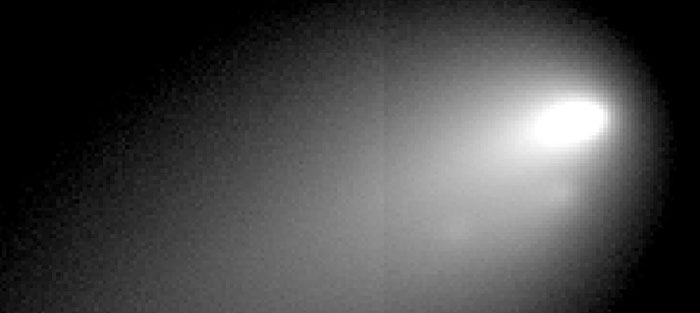-

Comet 168P-Hergenrother was imaged by the NOAO/Gemini telescope on Nov. 2, 2011 at about 6 a.m. UTC. Image credit: NASA/JPL-Caltech/NOAO/Gemini
-
The Hergenrother comet is currently traversing the inner-solar system. Amateur and professional astronomers alike have been following the icy-dirt ball over the past several weeks as it has been generating a series of impressive outbursts of cometary-dust material. Now comes word that the comet's nucleus has taken the next step in its relationship with Mother Nature.
"Comet Hergenrother is splitting apart," said Rachel Stevenson, a post-doctoral fellow working at NASA's Jet Propulsion Laboratory in Pasadena, Calif. "Using the National Optical Astronomy Observatory's Gemini North Telescope on top of Mauna Kea, Hawaii, we have resolved that the nucleus of the comet has separated into at least four distinct pieces resulting in a large increase in dust material in its coma."
With more material to reflect the sun's rays, the comet's coma has brightened considerably.
"The comet fragments are considerably fainter than the nucleus," said James Bauer, the deputy principal investigator for NASA's NEOWISE mission, from the California Institute of Technology. "This is suggestive of chunks of material being ejected from the surface."
For those interested in viewing Hergenrother, with a larger-sized telescope and a dark sky, the comet can be seen in between the constellations of Andromeda and Lacerta.
The orbit of comet 168P/Hergenrother comet is well understood. The comet, nor any of its fragments, are a threat to Earth.
-
Quelle: NASA
6949 Views
